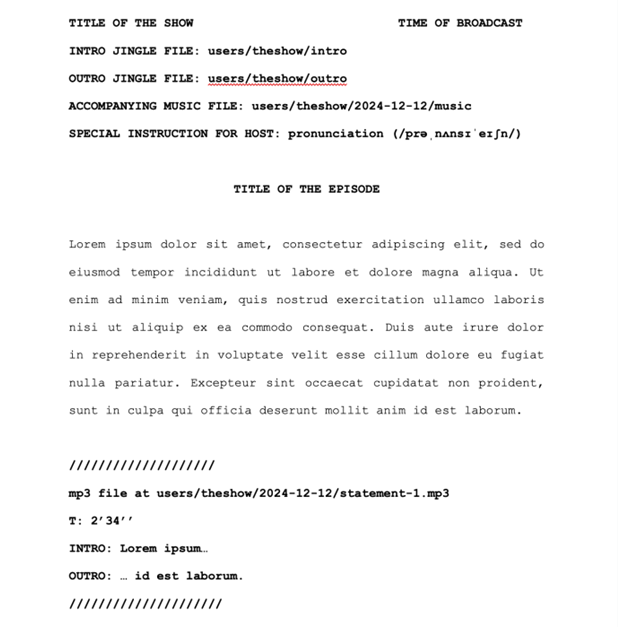Running the school radio
If your school has a PA (Public Address) system, it can be used to run the school radio station. The radio is a very classic medium, which is sometimes misunderstood. Its one-dimensionality is very romantic and deceivingly simple.
Lesson goals
- Learning about (radio) reporting in a low-cost environment
- Improving research and writing skills
Activities
Theory (10 minutes) - teacher-centered
Teacher explains the exercise's objective (and the associated rules).
Aim: students understand what to do and how to prepare their radio broadcast.
Exercise (25 minutes) - group work
Students are paired into smaller groups, each tasked with creating a part of the radio program.
Aim: students create audio content independently.
Discussion questions (10 minutes) - class
Students discuss the role, present and future, of radio broadcasting.
Aim: students critically examine the role of radio broadcasting in society.
Pedagogical tips and recommendations
- This can be a one-off event or a continuous practice; once students know how to run the school radio, it becomes a much easier endeavor.
Theory (10 minutes)
Most schools have a PA system, allowing the school to broadcast audio in all classrooms. This is usually used for basic announcements and the school bell but can also be used as a makeshift radio.
A radio broadcast is a single unit of audio content. It is usually composed of different parts.
● A jingle: the short intro/outro sequence that opens and closes a piece of the program. This is similar to a TV series intro spot, which usually lists the main actors and includes the show's title. A jingle is usually short (30 seconds) and includes music, the show's title, and possible extras (e.g., some radio shows have a short quip/joke).
● Spoken content: this can be further separated into pre-recorded and live content. It is common to include pre-recorded statements by others or invite them to do a short interview, especially in news reports. Radio hosts can improvise (e.g., a talk show) or read from a prepared prompt when speaking live. Sometimes, there is soft and quiet music playing during spoken content.
Each radio show will have a scenario, which usually looks like this:

You can choose a different format for doing the scenario; the one pictured has the font Courier New, size 12, double spacing, and justified alignment. Written in such a format, one page of text will translate into 1.5-2 minutes of spoken content.
A school radio broadcast can be done in many different ways and can include different things:
● School news: short updates on what is happening in school and the local area that might interest students, upcoming events, the results of the school’s sports teams, etc.
● Radio play: a special type of theater that includes only voice acting.
● Interview: discussion with a notable person (e.g., headmaster, debate team captain, etc.)
● Review: comment on a school concert or play…
● A mix of different categories.
Your students should be separated into groups, each working on their broadcast section. That includes preparing the text and collecting the required sound materials. The best software for basic audio editing (cut, crop, combine, etc.) is Audacity, which is open source (free to use), which you can find here: https://www.audacityteam.org/
After the first broadcast, the students can work on weekly broadcasts; this can become a long-term project or an extracurricular activity that requires less and less teacher input as time goes on and the students become more experienced.
Exercise (25 minutes)
You should divide students into smaller groups and let each group prepare a section of the program. A good total program length is roughly 15 minutes, meaning 7-10 pages in the Courier New 12 double-space format, or around 1500 words. If you separate your students into several groups, you can have each group prepare 2-3 minutes of radio program ideas.
You could have them all discuss what jingle their radio show should have, and then a volunteer should create it in Audacity.
When you are ready, select students who will read the broadcast. If you do this more often, you could put students into pairs and make every pair read one broadcast. Otherwise, you can pick volunteers as well.